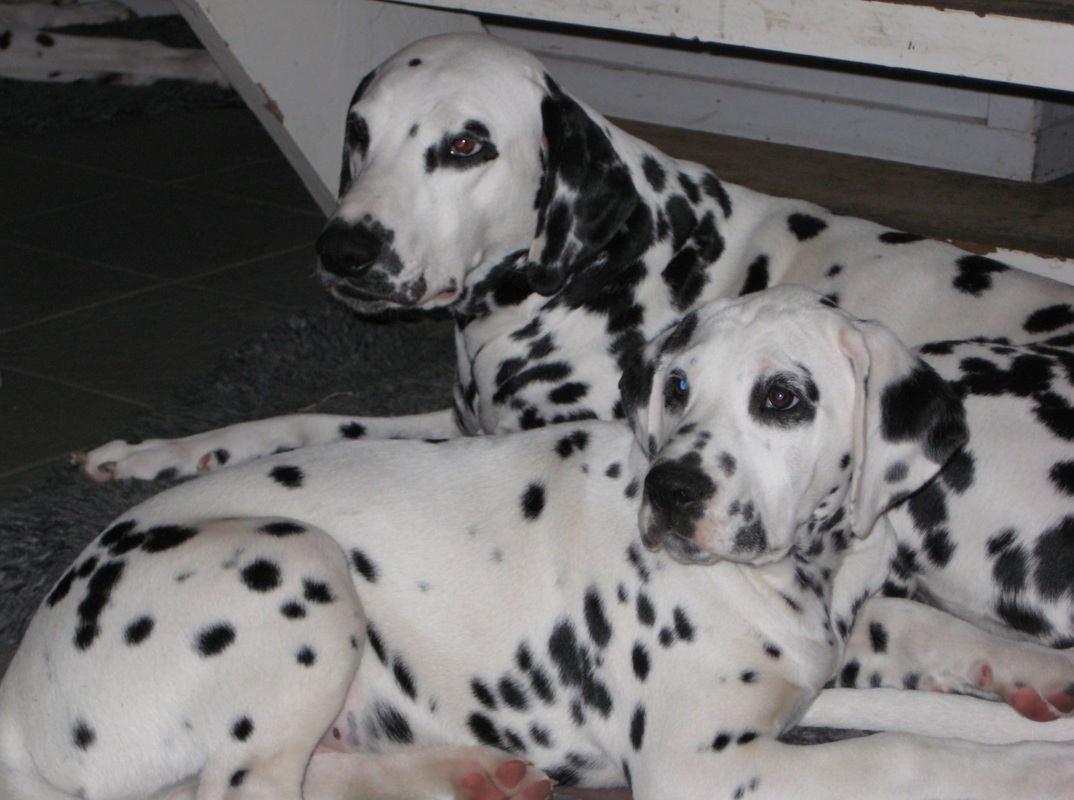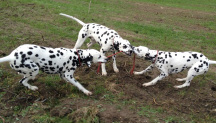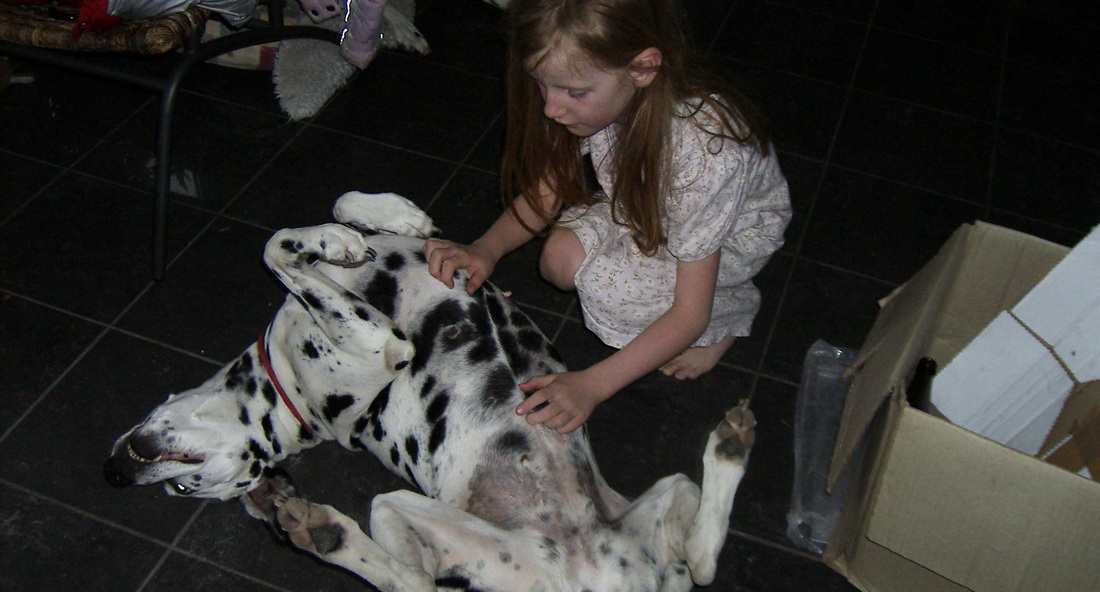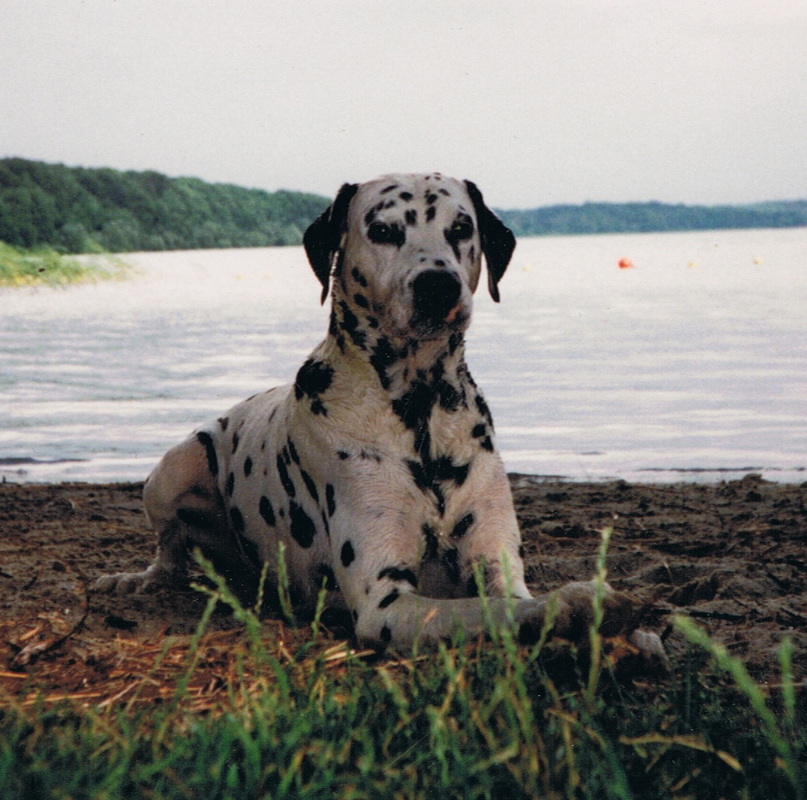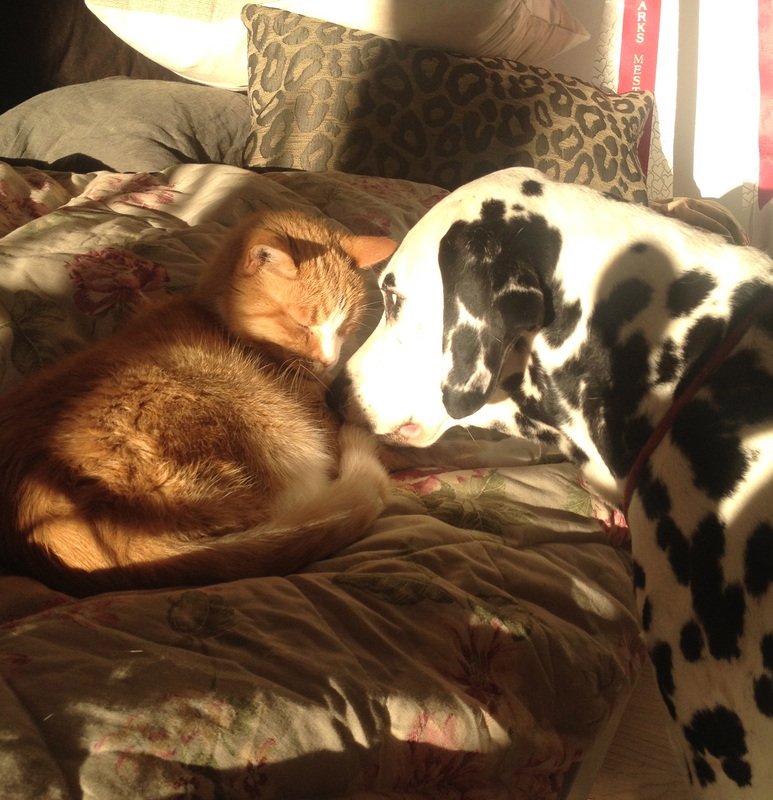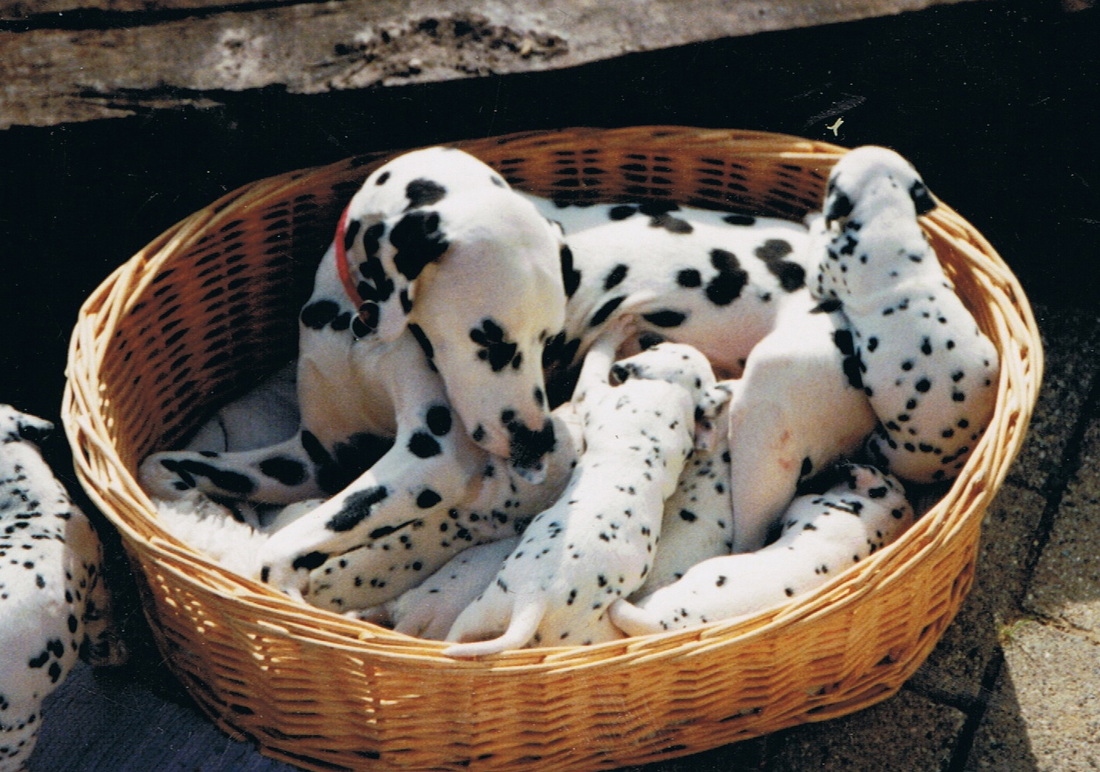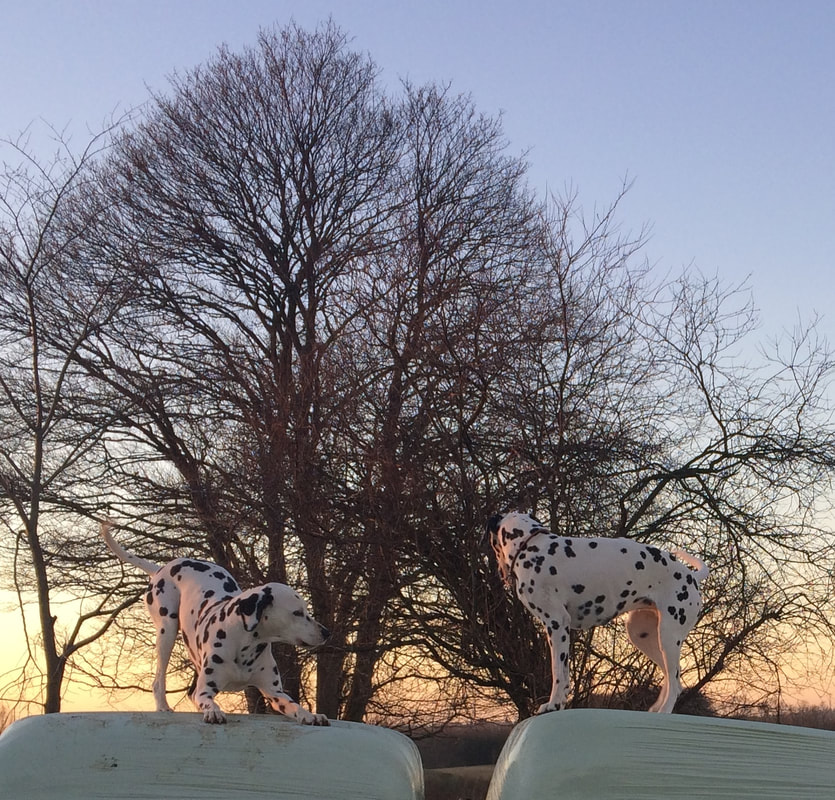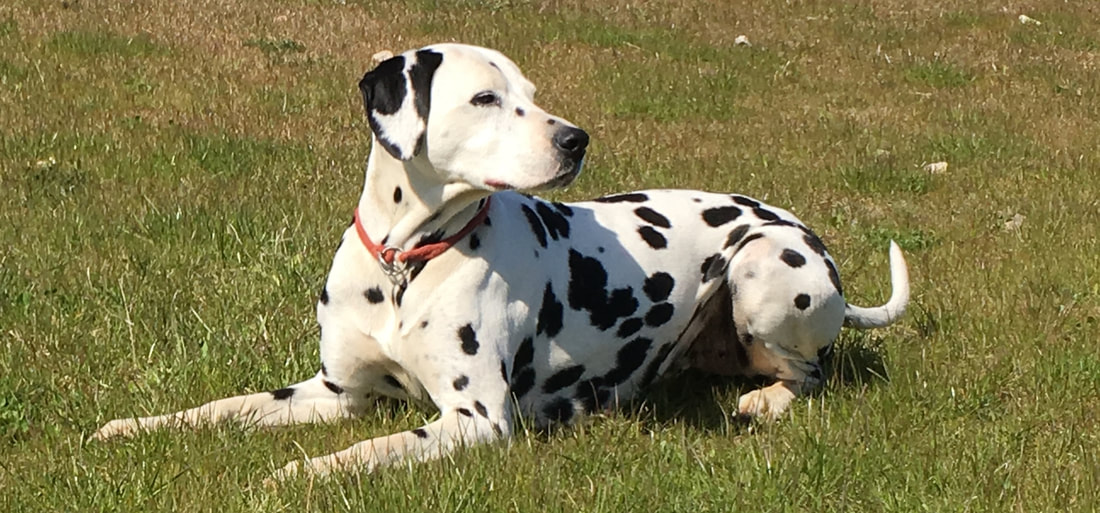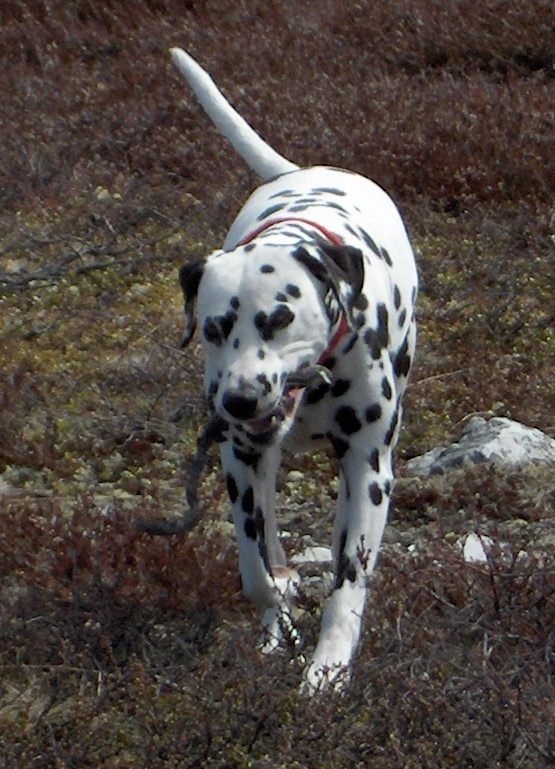|
In Kennel Curia we have bred Dalmatians through decades and across generations, and so we are exceptionally thoroughly versed in the breed and all its facets.
We attach great importance to specific elements such as temperament and health when choosing our breeding lines, and through a constant focus we have been able to breed those exact qualities, that we wish to promote in the dalmatian breed. Physics, appearance and health
The dalmatian is not to miss with it's characteristic spotted fur. The fur is short and smooth and extensively self-cleaning. On the head and the ears the hairs are short and fine and the fur is soft as velvet while it is rougher on the tail and the belly. The spots come in black and brown and must be brigth on the white fur, nicely spread across the body and with a harmonic size. The black spots are often a bit bigger than the brown ones, and the spots on the head are often smaller than the ones on the rest of the body. The nose must be fully colloured, and the prettiest expression is found on the dogs with markings around their eyes and and along the lip line. Big coloured patches often situated around the ears is regarded as undesirable. Thereto the Dalmatian cannot be tricoloured and is supposed to have dark brown eyes. The brown spotted Dalmatians usually have a lighter eye colour than the black spotted ones and it occurs that some Dalmatians is born with blue eyes. Blemishes such as these are however of no consequence to a regular family dog. A dalmatian is a medium size dog. The size varies from dogs to bitches and as the dog is usually isaround 58-61 cm from the shoulder and weights 20-27 kg, a bitch is 52-59 cm from the shoulder and weights 18-25 kg. The dogs are usually also a bit sturdier in the appearance with a bigger chest, a stronger back-line and bigger mussel build. Both the dogs and the bitches usually reach an age of 10 to 14 years. On it's older days the dalmatian looses some of its mussel mass, and particularly with the black spotted dogs the spots fades concurrently with the appearance of tiny spots called ticks. The eyesight and the hearing also gets poorer on the Dalmatian's older days, just like the activity level decreases. A dalmatian sheds when changing it's fur twice a year, but the older dog especially sheds quite a bit more. The specific genetic combination of the dalmatian carries a latent risk to deafness and teeth shortage, just like some blood lines plagues by allergy and hip dysplasia. When breeding we are most alert to evade all of such unhealthy elements. All our breeding dogs are hearing tested and x-rayed, so that we can be sure that our blood lines are 100 per cent healthy. |
Temperament and mentality
The dalmatian is a very versatile dog. It has a good-natured and friendly mind and is curious and attentive. It is incredible expressive with a clear and very eloquent body language which combined with a delicate disposition makes communication an easy art. The dalmatian is intelligent and lively. Because of that it thrives best in an active environment with walks or runs where it can use it's body and run free. The dalmatian is build to run far and has great stamina, if it is possible to tire it at all. At the same time it is very easy-going. In it's home it is calm and amiable and seeks out warm resting spots, like a bed, a sofa, in front of the fire place or on a floor with heating. Most importantly it positions itself where it can keep an eye on whatever goes on around it. The dalmatian becomes very attached to it's family and it absolutely loves attention. Actually the dalmatian would rather he could be the center of any given situation, and even though it in natural way is ever vigilant it is incredible complaisant and endearing in it's approach to even total strangers. The dalmatian is extremly cuddly and affectionate but also very sensitive and so the easiest way to reach out to the dog is through a persistent but positive training and nurture during human-dog intercourse. In that way the dog becomes a part of the family and the family becomes the dog's pack. Because the dalmatian to such a extent develops strong bonds to it's owners, it works well as a only dog as well as in a smaller pack. The dalmatians quickly finds a natural rank order internally and with the temperament of our dogs we have good experiences with any pack combination regarding as well age as gender and breed. In the upbringing the dalmatian requires a firm hand, but a well-mannered dalmatian is friendly to children and can easily be handled by active elderly people. A dalmatian, that early in life is socialized around other animals and people develops thereto a distinct tolerance which enables it's appealing and thoroughly positive attitude to be expressed in any situation. The history of the dalmatian
It is believed that the Dalmatian derives from Croatia, most specifically from the area called Dalmatia where the breed can be traced all the way back to the 15th century. Here it functioned as guard dog and traveling companion to the croatian nomads and as war dogs protecting the boundaries of Dalmatia. In church records the Dalmatian can be traced up trough the middle ages, where they appear in circuses, very popular because of their dramatic colours. Getting closer to the 20th century the breed spreads across the European continent and is used for a variety of purposes. Because of their physic and ability to endure long running distances the Dalmatians were often used as carriage dogs. They associated easily with the horses and could protect the coaches, coachmen and passengers from bandits. Dalmatians were also used by the American firemen as they could both run in front of the carriage clearing the way through the crowd in the case of emergency responses and protect the very wanted police horses and later carriages on the fire station. When the Dalmatian comes to England in 1862 it makes big impression with it's characteristic appearance. The breed is officially defined and developed more intensively with the foundation of the first Dalmatian Club in 1890. After Dodie Smith's publication of "101 Dalmatians" in 1956 and the later film version by Walt Disney the breed's popularity increases rapidly. This however causes many inexperienced enthusiasts to launches themselves into breeding the special dog, and their lack of knowledge on the breed results in a lot of not-social dogs which gives the Dalmatian a mixed reputation in the en of the nineties. The Danish Dalmatian Club is founded in 1980 subsequent to the Danish Kennel Club with the purpose to gather the interest around the Dalmatian as a companion dog. Today the Dalmatian is a relatively rare breed. 50-80 puppies are born in the time of a year, a number limited to fit the demand. |
